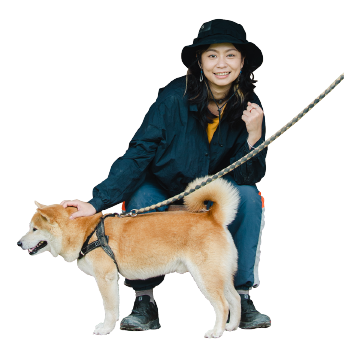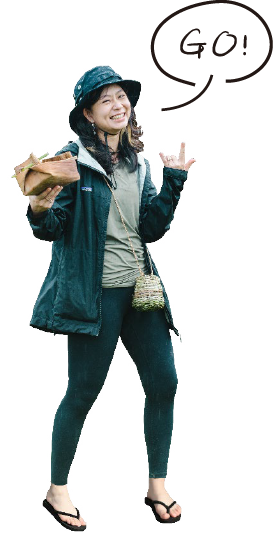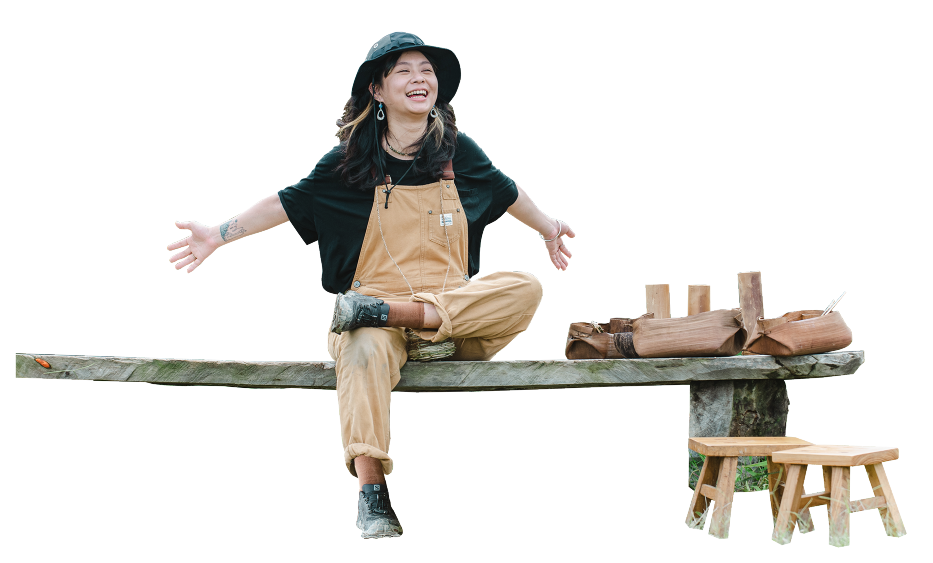
Kuo Pei-Hsuan
Born in 1992
MV director
Head of Grass Power Studio
Love to drink. The drunker she gets, the more talkative she becomes.
A goober in disguise of a hipster.

I’ve just returned from a trip to Taitung one month before receiving the invitation to this project. During that trip, what impressed me most, besides the relaxing beauty of nature and landscapes, were Taitung’s various delicacies and buildings featuring indigenous elements, as well as numerous handicrafts and ornaments that decorated the fronts of houses. But when asked about the characteristics of Taiwan’s indigenous culture, I cannot think of an answer at the moment. This is because we usually do not deliberately make a distinction between the indigenous and non-indigenous in daily lives, except when seeing performers in traditional costumes or encountering products whose names highlight indigenous elements. It’s been my belief that this is how we live in such a place that is home to people of diverse ethnic backgrounds. How am I going to prove my connection to these communities? Take, for example, memorizing the names of all the different indigenous groups across the island for exams, or listening to indigenous music and watching movies about them as hobbies?
I have a particularly vivid memory of my childhood and would often recount some of the scenes so precisely that my parents got shocked. When I was young, they loved to get kids in touch with nature, and therefore I’ve visited indigenous communities many times. Up to now I still remember some fragments of the memories from the age of five, which are so vague that I assume them to be a dream when I grow up. As I remember, it was a night when the adults formed a circle to make merry, singing to the guitar. A curious girl, I went around to see and touch whatever interested me. Suddenly I got burned by something glowing red with heat. Frightened, I was lifted by my parents and warned by a middle-aged man who said laughingly, “It's a cigarette!” Shortly afterward, a local girl about my age, who seemed to be familiar with the place, came over and invited me to play hide-and-seek. Unlike me, who was very introverted then, she was so bold and venturesome as to take me to hide here and there from the adults and even invited me to her home as a guest. In the end, I was brought back by the adults, who reminded me, “She is the community leader’s daughter, the princess of the village.” I had not the slightest idea of what “community leader” meant. I just thought, “Wow! She’s way different from the princess I’ve seen in cartoons who lives in the castle.” Years later, I did find some photos that proved these memories were not dreams at all. They were real experiences from my childhood.
Now because of my job as an MV director, I get to know many musicians and indigenous pop singers, the most well-known among whom include Amei, Power Station, and Abao. Recently I am also interested in the new generation of indigenous rappers and YouTubers, whose energy and natural sense of rhythm form my perception of indigenous people. What is more, they seem to be able to hold their liquor, which is worth anticipating to a big drinker like me.
After y ears of working, I have a feeling that modern people are prone to experience a sense of insecurity about life due to the way they live. It seems that everything is easy to get, but none of it truly belongs to you. This project appeals to me not just because I fell in love with camping and fishing recently. It is also because the course it offers enables me to experience the entire process from collection to production, to feel the interaction with nature, and to build a traditional home with my own hands. Though my knowledge about indigenous people’s houses is limited, it is both the intellectual and spiritual growth that I am looking forward to achieving through this opportunity.
ears of working, I have a feeling that modern people are prone to experience a sense of insecurity about life due to the way they live. It seems that everything is easy to get, but none of it truly belongs to you. This project appeals to me not just because I fell in love with camping and fishing recently. It is also because the course it offers enables me to experience the entire process from collection to production, to feel the interaction with nature, and to build a traditional home with my own hands. Though my knowledge about indigenous people’s houses is limited, it is both the intellectual and spiritual growth that I am looking forward to achieving through this opportunity.





